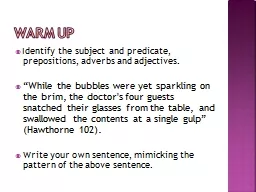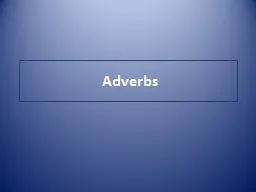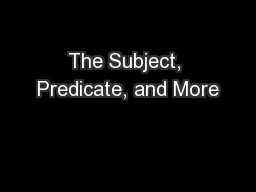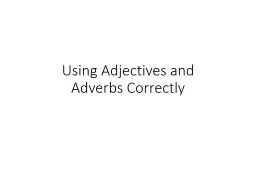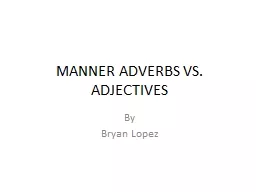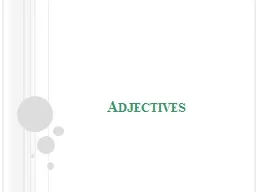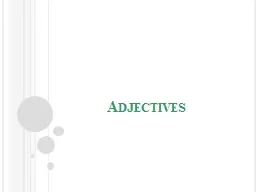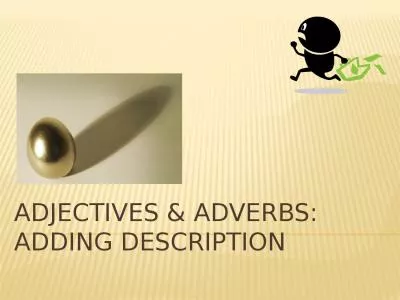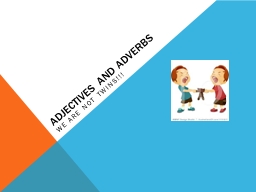PPT-Warm up Identify the subject and predicate, prepositions, adverbs and adjectives.
Author : luanne-stotts | Published Date : 2018-03-16
While the bubbles were yet sparkling on the brim the doctors four guests snatched their glasses from the table and swallowed the contents at a single gulp Hawthorne
Presentation Embed Code
Download Presentation
Download Presentation The PPT/PDF document "Warm up Identify the subject and predica..." is the property of its rightful owner. Permission is granted to download and print the materials on this website for personal, non-commercial use only, and to display it on your personal computer provided you do not modify the materials and that you retain all copyright notices contained in the materials. By downloading content from our website, you accept the terms of this agreement.
Warm up Identify the subject and predicate, prepositions, adverbs and adjectives.: Transcript
Download Rules Of Document
"Warm up Identify the subject and predicate, prepositions, adverbs and adjectives."The content belongs to its owner. You may download and print it for personal use, without modification, and keep all copyright notices. By downloading, you agree to these terms.
Related Documents

